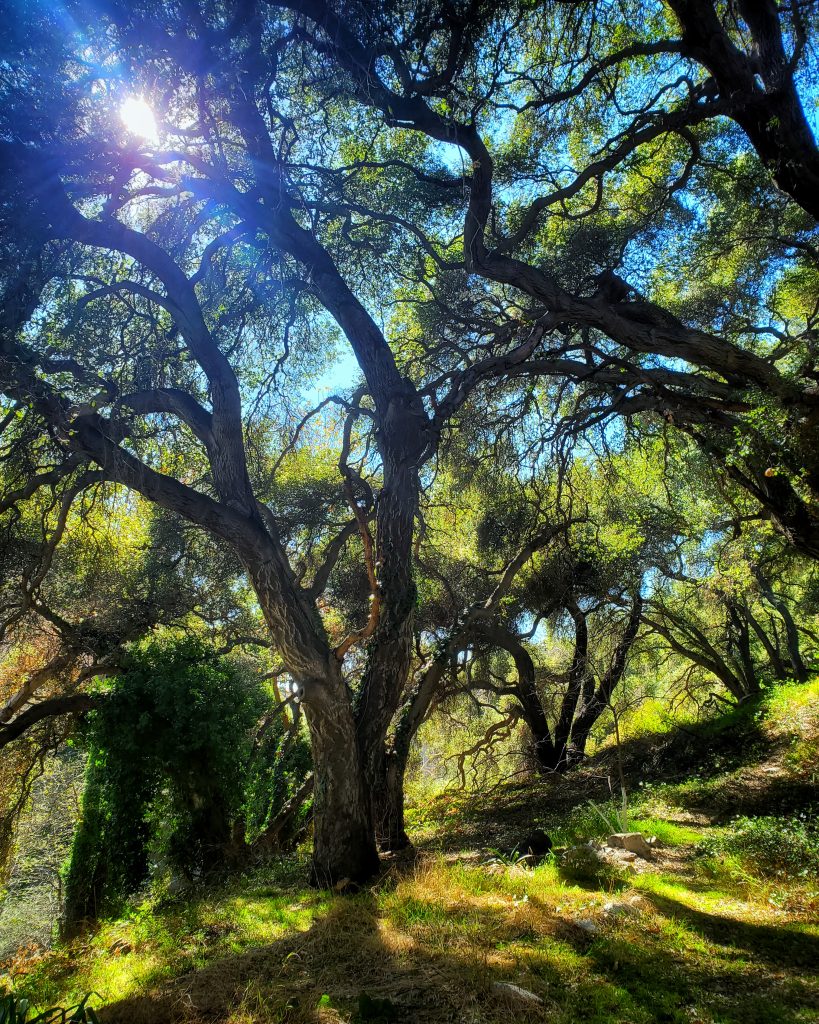Crucial Tree Care Practices in Los Angeles: Ensuring Urban Greenery Thrives
Los Angeles, a city best known for its sprawling urban landscape, is also home to an incredibly diverse array of trees. From the iconic palm trees lining Sunset Boulevard to the historic Moreton Bay Fig trees gracing our luckiest local parks, trees in Los Angeles face a unique set of challenges. And these challenges require specialized care strategies to ensure the city’s greenery not only survives but thrives! This article will delve into the essential practices of tree care tailored to the specific conditions of Los Angeles.
Understanding Los Angeles’ Unique Arboreal Landscape
Our trees stand as vital and majestic guardians, offering us shade, beauty, and other crucial environmental benefits in an otherwise stark, urban landscape. And properly nurturing these arboreal giants involves a delicate balance of specialized care practices tailored to the unique challenges presented by our city’s climate and soil conditions. With a deep understanding of Los Angeles’ Mediterranean climate, with it’s dry summers and mild, wet winters, along with various urban pollution factors, and many diverse soil types, arborists and tree enthusiasts alike embark on a mission to ensure the thriving success of our city’s greenery.
Quenching Thirst: Smart Watering Techniques for LA’s Urban Forest
Water takes center stage in the arboricultural ballet of the Los Angeles area. As the dry months descend, smart watering techniques become paramount to combat water stress and sustain tree health. From deep watering methods that encourage root growth to the strategic use of drip irrigation systems, each tree species demands a customized approach to watering. Seasonal adjustments, such as increasing watering frequency in summer while safeguarding against root rot, underscore the importance of adaptive care strategies in nurturing a vibrant urban forest.
One of the primary concerns for trees in Los Angeles is water stress, especially during the dry months. While some trees are drought-tolerant, others require regular watering, and it is critical to understand the water needs of each individual tree species. But while individuality is highly beneficial to our trees, some methods of care can help encourage most trees to thrive! One highly recommended example of this is implementing deep watering methods while new trees become established, which can encourage their roots to grow downward rather than spreading shallowly. This practice not only helps trees access water from deeper soil layers but also contributes to their long-term stability and health.
For most young trees, establishing a deep and extensive root system is critical and requires consistent, deep watering. Mature trees of a non native variety, on the other hand, generally require less frequent but equally thorough and deep watering. Employing drip irrigation systems or soaker hoses can significantly improve water efficiency by delivering water directly to the roots, helping to minimize evaporation.
Seasonal adjustments to watering schedules are also critical to tree health! In the peak summer months, increasing the frequency of watering while still ensuring that the soil dries out between sessions can help prevent waterlogging and root rot. Additionally, implementing water-wise landscaping around trees can reduce competition for water and reduce the additional moisture held near the roots which helps promote a healthier tree environment.

Shaping Growth: How Pruning Keeps Trees Healthy and Safe in LA
Pruning emerges as another vital practice in the tree care playbook, offering benefits from aesthetics, to safety, and even bolstering future growth potential. From the strategic removal of dead branches to the artful shaping of tree architecture, pruning stands as a safeguard against potential hazards and an enabler of healthy development. The objectives of pruning vary greatly case-by-case but might include removing dead branches, enhancing form, or reducing risk from falling limbs.
Timing is key in the pruning symphony, with considerations for seasonal patterns and species vulnerabilities guiding arborists in their quest to optimize tree health. But while pruning is vital, it should not be undertaken lightly, as improper cuts can lead to a host of problems, which could include making the tree vulnerable to pests and diseases or, in more extreme cases, improper pruning may even kill the tree entirely, creating a dangerous environment for you and your property if it were to fall!
Season and weather patterns are also an important consideration when undertaking a pruning job, and in Los Angeles especially, pruning should be timed to avoid peak periods of heat and pest activity to help ensure the tree’s healing process will be at its most effective. Beyond weather considerations, it is also best to prune during each specific tree’s dormant season when trees are even least susceptible to harm. However, additional care should be taken with certain species particularly susceptible to diseases at specific times of the year. Ask your tree care specialist if you have a tree that is particularly susceptible to pest or disease in your area!
For young trees, structural pruning is crucial for developing a strong tree architecture. For mature trees, maintenance pruning helps preserve their health and aesthetic appearance. Always use clean, sharp tools to make precise cuts that heal quickly. And to be safe, you should always consult with or hire a professional arborist to ensure any pruning is done correctly.
Beneath the Bark: Unlocking Healthy Growth with Superior Soil Care
Los Angeles’ soil varies greatly across it’s spwrawling domain in Southern California, ranging all the way from sparse and sandy to dense and clay-rich. And understanding the specific soil type at each site is crucial for effective tree care. Effective soil management begins with understanding the existing soil conditions. Soil testing can reveal nutrient deficiencies or pH imbalances that may need to be addressed.
A simple amendment is incorporating organic matter into the soil, which can improve its structure, fertility, and ability to hold water—critical aspects in a region where water efficiency is paramount. Covering the soil with organic mulch not only conserves moisture but also adds nutrients back into the soil as it decomposes.
Mulching is highly recommended to retain soil moisture, regulate soil temperature, and reduce weed competition. However, it’s essential to apply mulch correctly, avoiding “volcano mulching” around the tree base, which can lead to rot. The appropriate mulch should be applied in a doughnut shape around the base of the tree, keeping it away from the trunk to prevent moisture buildup and potential bark rot. And an ideal layer of mulch is thick enough to benefit the soil and roots beneath without accidentally suffocating them.
A Healthy Defense: Winning the Battle Against Pests and Diseases
Trees in Los Angeles are susceptible to a variety of pests and diseases. Regular monitoring and early intervention are key to managing these threats. Integrated pest management strategies, which can include biological, cultural, and chemical controls, can be very effective while minimizing environmental impact. But more than anything, vigilance is truly key in identifying pest and disease issues early and before they become severe. Regular inspections of the tree bark, leaves, and the surrounding ground can help reveal the beginning of any trouble when it’s still at a fixable state!
Natural predators and beneficial insects can be amazing allies in controlling pest populations. For diseases, cultural practices such as proper watering, mulching, and pruning can also greatly reduce the incidence of disease.
When chemical controls do become necessary however, choosing the least toxic option and applying it at the right time can minimize it’s impact on our environment and on the non-target species in the treatment zone. Professional arborists can offer guidance on managing pests and diseases specific to the species and the local area.
Future Forests: Selecting Trees for a Greener, More Sustainable LA
Given Los Angeles’ unique environment, selecting the right tree species for planting is particularly crucial. Drought-tolerant or native species are often the best choices for the local climate and soil conditions. These species are more likely to thrive with less water and care, contributing to a more sustainable urban forest.
Choosing trees that are well-suited to the specific conditions of a site is perhaps the most crucial step in ensuring their long-term health and sustainability. Consideration should be given to the tree’s mature size, root behavior, water needs, and tolerance to pests and diseases. Drought-tolerant and native species generally require less maintenance and are more resistant to local pests and diseases.
Consulting with local experts like arborists or the city’s forestry department can provide valuable insights into the best species for any particular location. Additionally, diversity in tree species is something to consider when planting a new tree as well, as a healthy array of species helps prevent the spread of pests and diseases that can easily decimate monocultures.
Expanding on these essential practices can significantly enhance the health and longevity of trees in Los Angeles, contributing to a greener, more sustainable urban environment.

Guardians of the Green: The Indispensable Role of Arborists in LA
In the sprawling urban landscape of Los Angeles, where natural beauty intersects with the developed environment, professional arborists stand as key guardians of the city’s green canopy. For many Los Angeles residents, the complexity of tree care can be daunting, and professional arborists, particularly those certified by reputable organizations, are here to provide critical services! From assessing tree health and risk to performing sophisticated pruning and disease management, arborists ensure that trees receive care based on the latest scientific knowledge and standards. But these trained specialists are not just tree caretakers; they are the stewards of urban biodiversity, ensuring that Los Angeles’ trees not only survive but thrive. The expertise of arborists in tree care is critical for several reasons:
Tree MD: Diagnosing LA’s Urban Forest for a Healthier Tomorrow
Professional arborists possess a deep understanding of tree physiology and pathology that is essential for diagnosing and treating various tree diseases and pest infestations. Their ability to accurately assess tree health helps in preemptively addressing issues that could otherwise lead to tree decline or the need for removal. Regular health check-ups by arborists can significantly prolong the life of trees, contributing to the city’s overall ecosystem.
Strategic Cuts: The Art and Science of Tree Pruning
Well-executed pruning is an art backed by science, demanding a comprehensive knowledge of tree biology. Arborists know precisely when and how to prune trees to maintain their health and aesthetic appeal while ensuring safety. They skillfully remove dead or diseased branches, enhance tree structure for resistance against strong winds and storms, and clear branches from power lines and structures, mitigating potential hazards.
Green Matchmakers: Selecting the Perfect Trees for LA’s Landscape
The selection of appropriate tree species for specific locations is crucial for the long-term sustainability of LA’s urban forest as well! Arborists provide invaluable advice on which trees are best suited to your specific local climate, soil conditions, and any urban challenges present on your property! They can also offer guidance on proper planting techniques to ensure that young trees have the best start possible in their new environment, which can significantly impact their growth and survival.
Voices for the Trees: Educating and Inspiring LA
Beyond their direct tree care activities, arborists additionally act as advocates for the urban forest, working to raise public awareness about the importance of trees in the urban environment. They are able to share their wealth of knowledge in order to educate property owners, policymakers, and their communities about the benefits of trees, including air and water quality improvement, shade and cooling, and the enhancement of mental and physical health. Through advocacy and education, arborists encourage broader community involvement in tree planting and care, fostering a culture of stewardship.
In essence, professional arborists are an integral part of the ecosystem of Los Angeles, combining their technical expertise with a passion for the environment to nurture and protect the city’s green canopy. Their work ensures that Los Angeles’ trees continue to provide beauty, shade, and a host of ecological benefits, making the city a healthier, more vibrant place to live.
By entrusting the care of urban trees to these skilled professionals, Los Angeles invests in the vitality of its natural landscapes and the well-being of its residents, ensuring that its urban forest remains a treasured asset for generations to come.
Planting the Trees of Tomorrow: Ensuring a Greener Future for Los Angeles
Trees play a vital role in enhancing the quality of life in Los Angeles, contributing to air quality, shade, and the overall beauty of the urban landscape. By embracing specific tree care practices tailored to the local environment, residents and city authorities can ensure that these arboreal assets flourish. Whether it’s the guiding hand of an experienced arborist or the committed efforts of individuals, comprehensive tree care is the key to sustaining the green heartbeat of Los Angeles.
Written by Annie Lawler

Intrigued by the article you just read? Interested in adding some trees to your property? Want to better care for the trees you already have? We have an arborist on our staff! Click our consultation link above (or here!) to start the process today!

